Let’s embark on an exploration of engaging plant activities tailored for preschool learners. Harnessing their natural enthusiasm for outdoor exploration, we can channel their energy into purposeful and captivating activities that nurture their understanding of diverse plant life. These carefully crafted endeavors not only ignite excitement but also serve as valuable tools for fostering confidence and cultivating a profound connection with the natural world.
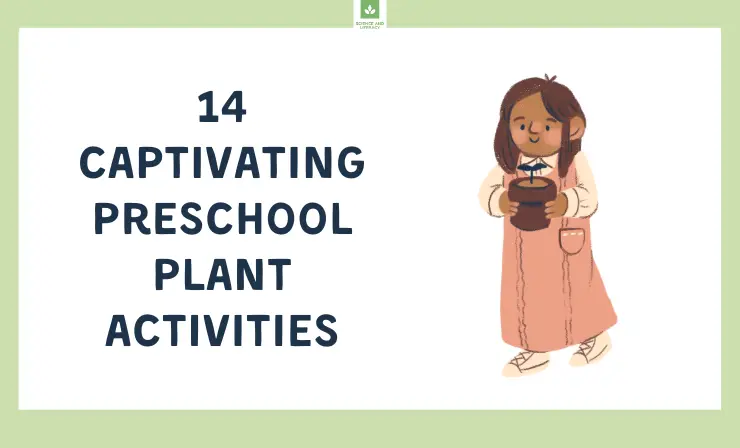
Through these plant-centric activities, children are not only encouraged to revel in the joy of learning but are also provided with a unique window into the origins of their food and everyday products. By actively participating in these activities, they can grasp the intricate relationship between plants and their daily lives.
Planting activities in school are enjoyed by both educators and students alike:
Unbelievably proud teacher moment!!! During the first lockdown I taught gardening to the 12 year old kids in my tutor group at school… remotely- for well-being. A large majority had never grown their own before- neither had their families… I’ve just been sent these photos by… pic.twitter.com/MuLcm9rSkD
— The Allotment Cook (@AllotmentCooks) July 8, 2023
As young minds delve into the world of plants, they embark on a journey of discovery that extends beyond the classroom. Each activity becomes a stepping stone for understanding the symbiotic connections within ecosystems and the importance of sustainable practices. By sowing the seeds of knowledge through these engaging experiences, we empower preschoolers to become informed and responsible stewards of the environment, while nurturing their innate curiosity and wonder.
So, here are the 14 preschool plant activities I’ve picked:
ted below are 14 distinct middle school elective options, each promising an array of extra performance chances:
| Plant Activity | Difficulty level | Cost | What does it teach |
| 1. Finding Out How a Seed Grows Into a Plant | Low | Free | Teaches children about the lifecycle of plants, illustrating how a tiny seed transforms into a fully grown plant through processes such as germination, root development, and sprouting. |
| 2. Watching Seeds Grow in Slow-Mo | Low | Free | Offers a visual understanding of how plants grow, showcasing the stages of seed germination and early growth in slow motion. It teaches about the different growth phases of plants. |
| 3. Reading The Tiny Seed by Eric Carle | Low | Low | Introduces children to the concept of plant life cycles through storytelling. It teaches about seeds, growth, seasons, and the natural world. |
| 4. Playing Show and Tell | Low | Low | Promotes communication skills and confidence. It teaches children to share information about plants and their characteristics. |
| 5. Making Seed Tape | Low | Low | Introduces children to planting techniques and the concept of spacing seeds for optimal growth. It teaches about organization and efficient planting. |
| 6. Growing Watercress | Low | Low | Teaches children about plant growth and care. It also introduces them to the specific requirements for cultivating watercress, such as water and light. |
| 7. Building a Sprout House | Low to Middle | Middle | Teaches children about creating a suitable environment for seed germination and growth. It also demonstrates the basic needs of plants, including moisture and sunlight. |
| 8. Germinating in a Jar | Low to Middle | Middle | Demonstrates the process of germination and root development. It teaches children about the importance of water, light, and nutrients in the growth of plants. |
| 9. Sprouting Sweet Potatoes | Low to Middle | Middle | Introduces children to the concept of vegetative propagation, where new plants grow from plant parts. It teaches about different methods of plant reproduction. |
| 10. Growing an Avocado | Low to Middle | Middle | Teaches children about plant propagation and the lifecycle of avocados. It also provides insights into the importance of patience and care in nurturing plants. |
| 11. Painting with Chlorophyll | Middle | Low | Combines art and science by teaching children about the role of chlorophyll in photosynthesis. It introduces them to basic plant processes. |
| 12. Performing a Plant Dissection Experiment | Middle to High | Low | Provides a hands-on exploration of plant anatomy, teaching children about the different parts of plants and their functions. |
| 13. Conducting a Pipe Cleaner Pollinators Experiment | Middle to High | High | Educates children about the vital role of pollinators in plant reproduction. It teaches about mutualistic relationships in ecosystems. |
| 14. Sculpting Plants in Clay | Middle to High | High | Encourages creativity while teaching children about different plant forms and textures. It promotes artistic expression related to plant life. |
1. Finding Out How a Seed Grows Into a Plant
Difficulty Level: Low
Cost: Free
What Does It Teach: Teaches children about the lifecycle of plants, illustrating how a tiny seed transforms into a fully grown plant through processes such as germination, root development, and sprouting.
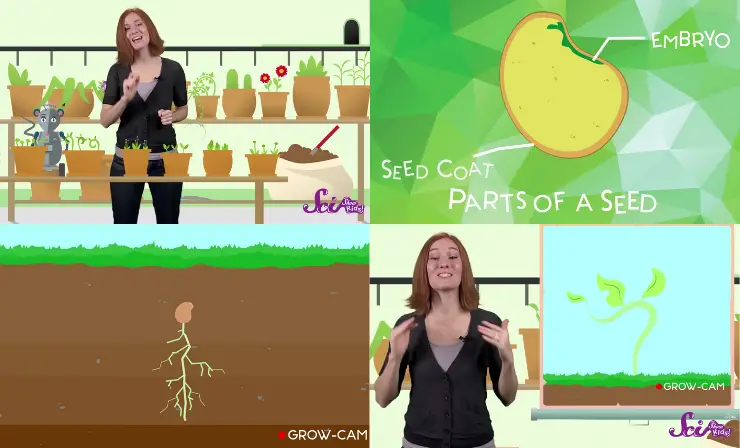
This is an engaging and educational preschool plant activity that ignites young minds’ curiosity about the wonders of nature. It serves as an excellent starting point for introducing children to the enchanting world of seeds and the plant life cycle.
Through the power of visual learning, this activity employs a strong video presentation to captivate preschoolers’ attention right from the beginning. As they watch seeds transform into vibrant plants, the children are drawn into the fascinating journey of growth and development. The dynamic visual cues help them comprehend the intricate process of how a tiny seed gradually blossoms into a full-fledged plant, nourished by soil, water, and sunlight.
This activity not only stimulates their cognitive development but also fosters an early appreciation for nature and its processes. The awe-inspiring transformation showcased in the video prompts questions, discussions, and imaginative thoughts, nurturing a sense of wonder and discovery among the preschoolers. Finding out how a seed grows into a plant sets the stage for a comprehensive exploration of the natural world, laying a solid foundation for further plant-related activities and lessons. Through this activity, young learners embark on a delightful journey of discovery, planting the seeds of knowledge that will continue to flourish as they grow.
Below is the video that you can utilize to demonstrate to the students the process of how a seed develops into a plant:
2. Watching Seeds Grow in Slow-Mo
Difficulty Level: Low
Cost: Free
What Does It Teach: Offers a visual understanding of how plants grow, showcasing the stages of seed germination and early growth in slow motion. It teaches about the different growth phases of plants.
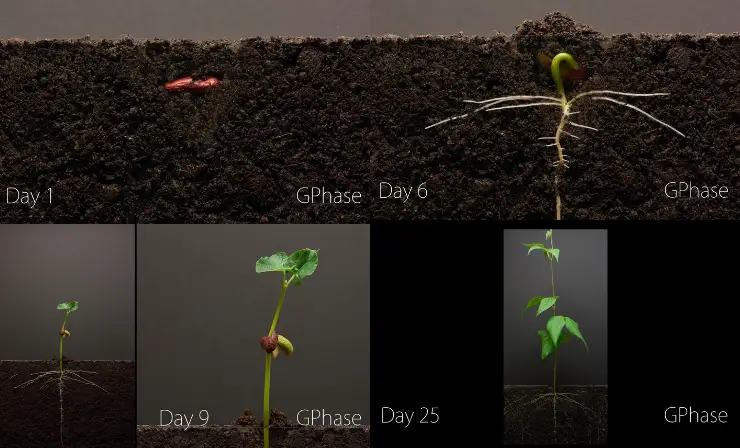
Engaging preschoolers in the marvels of nature, the activity of watching a time-lapse video showcasing the rapid growth of a plant’s root system is a mesmerizing experience that sparks wonder and curiosity. This visual journey, captured over a span of just a few days, unveils the hidden magic of nature’s processes.
The time-lapse video offers an up-close look at the intricate dance between a tiny seed and the nurturing soil. As the roots extend and explore, preschoolers witness the plant’s insatiable quest for sustenance and life. The accelerated pace of growth in the video appeals to their sense of adventure, leaving them eager to embark on their own exploration of nature’s miracles.
Through this activity, young learners not only grasp the concept of plant growth but also develop an appreciation for the interconnectedness of life. The video sparks questions, discussions, and observations, encouraging children to actively participate in their learning journey. As they witness the captivating transformation unfold before their eyes, the desire to replicate this enchanting process themselves takes root.
Watching the time-lapse video of a seed growing cultivates a sense of stewardship for the environment, as children begin to comprehend their role in nurturing and preserving the natural world. This activity plants the seeds of lifelong curiosity and empathy, fostering a deep connection with the Earth and the wondrous life it sustains.
3. Reading The Tiny Seed by Eric Carle
Difficulty Level: Low
Cost: Low
What Does It Teach: Introduces children to the concept of plant life cycles through storytelling. It teaches about seeds, growth, seasons, and the natural world.
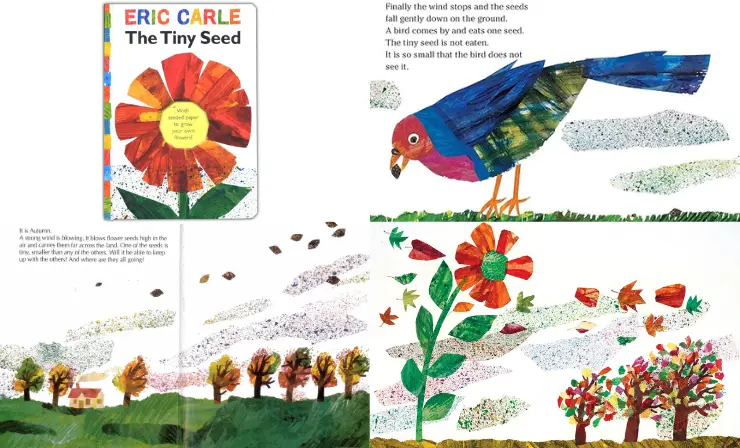
Eric Carle’s beloved book, “The Tiny Seed,” stands as a captivating cornerstone for preschool plant activities, illuminating the enchanting journey of a seed’s life cycle. As a renowned reference for young learners, the book becomes a delightful tool to engage their imaginations and cultivate an early understanding of the natural world.
During story time, as the pages unfold, the children are transported into a world where a tiny seed embarks on a grand adventure. Eric Carle’s vibrant illustrations and lyrical prose effortlessly capture their attention and kindle their curiosity. As they listen intently, the story of growth and transformation unfolds, revealing the intricate process of how a simple seed evolves into a magnificent plant, aided by the elements of nature.
Beyond the storytelling, this book lays the foundation for an array of further activities. From planting their own seeds to creating art inspired by the book’s captivating visuals, the possibilities are as vast as the garden itself. Discussions about the vital role of water, sunlight, and soil stimulate young minds to think critically about the world around them.
Eric Carle’s “The Tiny Seed” not only imparts valuable lessons about science and nature but also nurtures a love for literature and exploration. This preschool plant activity intertwines learning and play, fostering a deep-rooted connection with the natural world and planting the seeds of lifelong curiosity.
Here’s a video featuring a captivating reading of this book:
4. Playing Show and Tell
Difficulty Level: Low
Cost: Low
What Does It Teach: Promotes communication skills and confidence. It teaches children to share information about plants and their characteristics.
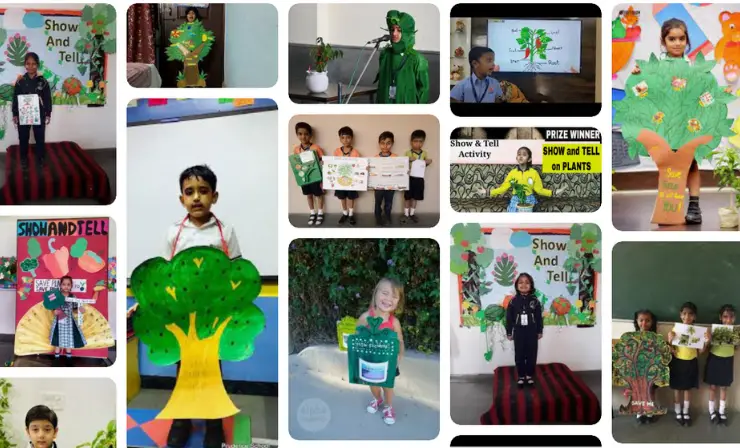
Igniting a garden of knowledge and fostering a sense of camaraderie, the show and tell activity takes root as a vibrant preschool plant endeavor. In this lively exchange, children embrace the role of botanical ambassadors, bringing forth an array of veggies and fruits that represent the diverse world of plants.
With a spirit of excitement, each child steps forward to showcase their chosen plant treasure, basking in the spotlight while sharing their newfound knowledge. Time limits enhance their communication skills as they share fascinating facts about their chosen fruit or vegetable. The applause that follows not only celebrates their effort but also nurtures self-confidence, creating an atmosphere of encouragement and positivity.
This activity transcends the boundaries of the classroom, creating a web of learning and inspiration. As each child presents their botanical gem, their peers absorb a tapestry of information about various plants and their significance. Discussions unfold naturally, as questions lead to collaborative exploration of plant types, growth conditions, and culinary uses.
Show and tell becomes a platform for fostering curiosity and cross-pollinating knowledge. Through this simple yet powerful activity, children not only learn about the diverse world of plants but also embrace the joy of sharing and discovery. The seeds of camaraderie and enthusiasm for learning are sown, nurturing a deeper connection with nature and each other.
Below is a video that highlights how show and tell can be an engaging preschool plant activity:
5. Making Seed Tape
Difficulty Level: Low
Cost: Low
What Does It Teach: Introduces children to planting techniques and the concept of spacing seeds for optimal growth. It teaches about organization and efficient planting.

Delving into the realm of gardening, the activity of making seed tape becomes a delightful and practical endeavor for preschoolers. This hands-on project not only imparts valuable gardening skills but also kindles their creativity and nurtures patience.
With a dash of imagination and a sprinkle of seeds, young learners embark on the journey of creating seed tape. Armed with bean, corn, or grass seeds, along with simple materials like toilet paper and glue, they embark on a task that combines artistry and horticulture. As they carefully glue seeds along a strip of tissue paper, they curate their very own tapestry of potential growth.
This activity serves as an innovative solution to make planting easier and more precise, while also fostering a sense of responsibility. As the seed tape dries, children learn about the importance of waiting and nurturing, reinforcing patience in the process. This valuable lesson extends beyond the garden, nurturing a sense of delayed gratification in other aspects of life.
Through this activity, preschoolers explore the natural world while engaging in hands-on science. Discussions about seed types, growth requirements, and the role of soil and sunlight emerge naturally. The seed tape becomes a tangible representation of their potential impact on the environment, connecting them to the larger cycles of life.
In making seed tape, preschoolers don’t just sow seeds – they cultivate a sense of empowerment, responsibility, and connection to the Earth. This activity weaves together creativity and practicality, laying the groundwork for a deeper understanding of the natural world and the rewards of nurturing growth.
Watch this tutorial to find out how to make seed tape:
6. Growing Watercress
Difficulty Level: Low
Cost: Low
What Does It Teach: Teaches children about plant growth and care. It also introduces them to the specific requirements for cultivating watercress, such as water and light.
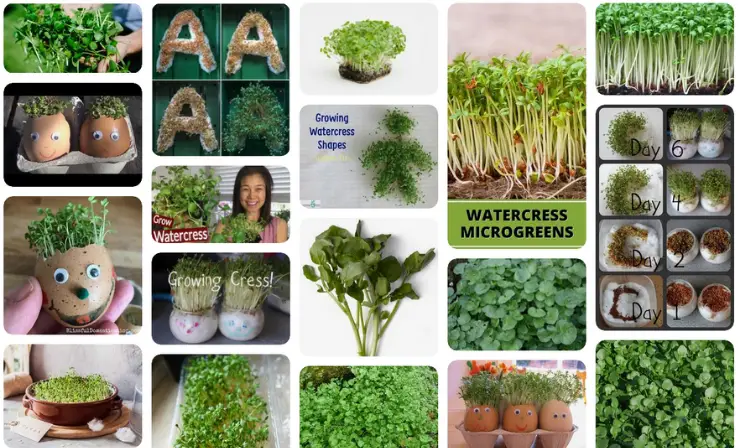
Embarking on a green adventure, the watercress growing activity presents an exciting opportunity for preschoolers to witness nature’s rapid transformation. With a touch of moisture and a sprinkle of curiosity, children delve into a hands-on experience that showcases the remarkable speed of growth.
Watercress, a vibrant and lively plant, becomes a canvas for imagination in this activity. The magic unfolds as damp cotton serves as the nurturing bed for these tiny seeds. As if by enchantment, preschoolers watch as watercress sprouts and extends, evolving into luscious “hair” that captures their attention and fosters a sense of wonder.
Beyond simple growth, watercress becomes a tool for creativity. The resilient nature of these plants allows children to sow seeds strategically, creating intricate patterns or even forming letters. This creative endeavor bridges the gap between science and art, nurturing cognitive development and fine motor skills while igniting the joy of exploration.
Through this activity, children learn about the vital role of water and light in nurturing life. They witness firsthand the symbiotic relationship between plants and their environment, fostering discussions about the interconnectedness of living things. This immersive experience piques curiosity, encouraging questions and conversations about the life cycle, the needs of plants, and the marvels of nature.
As watercress springs to life under their care, preschoolers cultivate a sense of stewardship for the environment. This activity plants seeds of curiosity, nurturing a deep connection with the natural world and inspiring a lifelong journey of exploration, creativity, and appreciation.
You also have the option to craft watercress eggheads, similar to the demonstration provided in the video below:
7. Building a Sprout House
Difficulty Level: Low to Middle
Cost: Middle
What Does It Teach: Teaches children about creating a suitable environment for seed germination and growth. It also demonstrates the basic needs of plants, including moisture and sunlight.
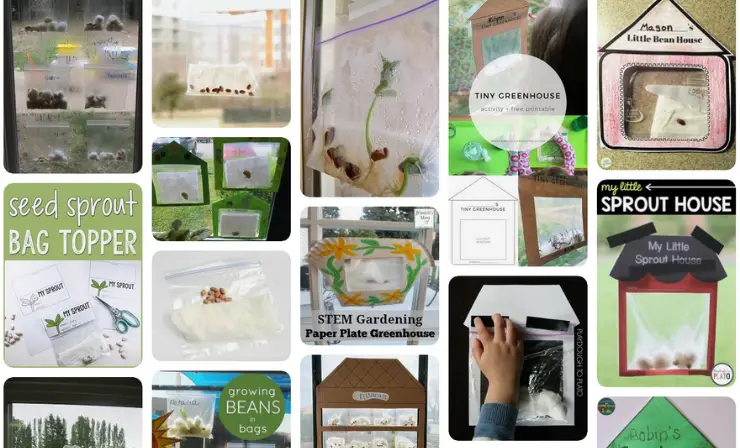
Embarking on a captivating journey into the world of plants, the activity of building a sprout house stands as an imaginative and hands-on endeavor for preschoolers. This enchanting project invites young learners to fuse their creativity with nature’s growth processes, resulting in an engaging and educational experience.
Guided by the desire to witness the magic of germination up close, children construct their very own sprout houses. Using simple materials such as clear plastic cups or containers, soil, and seeds, preschoolers curate a nurturing environment for their plant companions to flourish. As the seeds sprout and the tiny green shoots emerge, the transparent walls of the sprout house become windows into the incredible journey of growth.
The sprout house activity not only offers a visual spectacle but also nurtures a range of developmental skills. As children care for their sprouting seeds, they cultivate patience, responsibility, and an understanding of the essential needs of living things. Through hands-on exploration, they discover the significance of light, water, and soil in nurturing life.
This creative venture further encourages scientific inquiry and critical thinking. As the young botanists observe and document the changes in their sprout houses, they engage in discussions about plant anatomy, life cycles, and the environment. The sprout house becomes a classroom of discovery, where questions sprout as freely as the seeds theselves.
In building a sprout house, preschoolers bridge the gap between creativity and learning, cultivating an enduring connection with the natural world. This activity lays the foundation for a lifelong journey of exploration, growth, and appreciation for the miracles of nature.
Watch the video below to find out how to make a prout house:
8. Germinating in a Jar
Difficulty Level: Low to Middle
Cost: Middle
What Does It Teach: Demonstrates the process of germination and root development. It teaches children about the importance of water, light, and nutrients in the growth of plants.
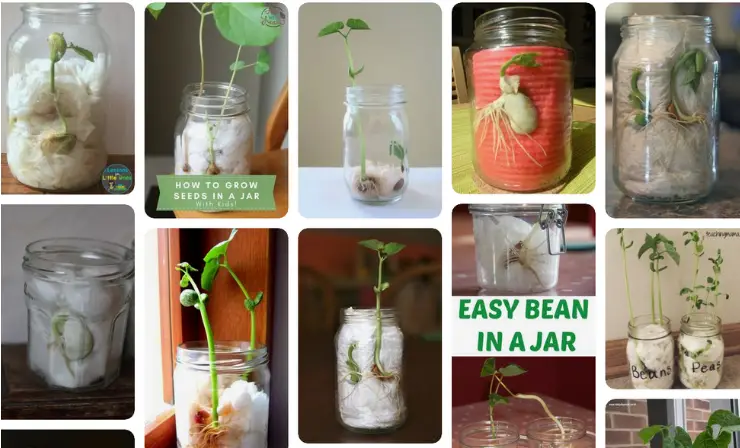
Embracing the wonders of nature, the timeless activity of germinating in a jar emerges as an essential preschool plant exploration. This classic endeavor invites young minds to witness the miraculous journey of life firsthand. By nurturing a bean seed cocooned in damp paper towels within the confines of a glass jar, children unveil the magic of growth in a tangible and captivating manner.
As the days unfold, the glass jar transforms into a miniature theatre of life, where roots delve into the darkness of the soil, a sprout emerges with boundless enthusiasm, and a seedling stretches toward the heavens. This hands-on experience grants preschoolers an intimate perspective of the plant life cycle – a vivid tableau of roots, stems, and leaves dancing in harmony.
Beyond the classroom, this activity nurtures curiosity and responsibility. Children eagerly monitor their nascent green companions, eagerly providing water, sunlight, and encouragement. The germinating jar serves as an enchanting metaphor for nurturing growth, igniting discussions about care, patience, and the environment.
By participating in this tactile journey, young learners forge a connection with the natural world. The germinating jar activity not only instills a deep appreciation for the power of growth but also cultivates a profound respect for the intricate mechanisms that sustain life on Earth. In planting a single seed, this activity sows the seeds of lifelong curiosity and stewardship.
Explore this video tutorial on creating a germinating jar:
9. Sprouting Sweet Potatoes
Difficulty Level: Low to Middle
Cost: Middle
What Does It Teach: Introduces children to the concept of vegetative propagation, where new plants grow from plant parts. It teaches about different methods of plant reproduction.

Embarking on an exploration of diverse plant life cycles, the activity of growing sweet potatoes emerges as a captivating preschool endeavor that offers a unique perspective on propagation. Through this hands-on experience, young learners are introduced to the fascinating concept that not all plants rely on seeds for reproduction.
Guided by curiosity, children delve into the world of sweet potatoes, unearthing the intriguing process of their growth. As they plant sweet potato slips – sprouts that grow from the eyes of a sweet potato – they witness firsthand the remarkable transformation from root to shoot. This journey of propagation offers a tangible lesson in the intricate ways plants reproduce and propagate.
Beyond the garden bed, the sweet potato growing activity sparks discussions about the interconnectedness of living things and the vital role plants play in our lives. Children explore concepts of sustainability, nutrition, and the significance of cultivating a diverse range of crops.
This activity is not merely about growing plants; it’s about nurturing a sense of curiosity and stewardship for the environment. As young minds witness the transformation of a humble sweet potato into a thriving plant, they cultivate a deep appreciation for the wonders of nature. This experience plants the seeds of lifelong learning, inspiring a connection with the natural world that extends far beyond the classroom.
You can also watch this video about growing sweet potatoes:
10. Growing an Avocado
Difficulty Level: Low to Middle
Cost: Middle
What Does It Teach: Teaches children about plant propagation and the lifecycle of avocados. It also provides insights into the importance of patience and care in nurturing plants.
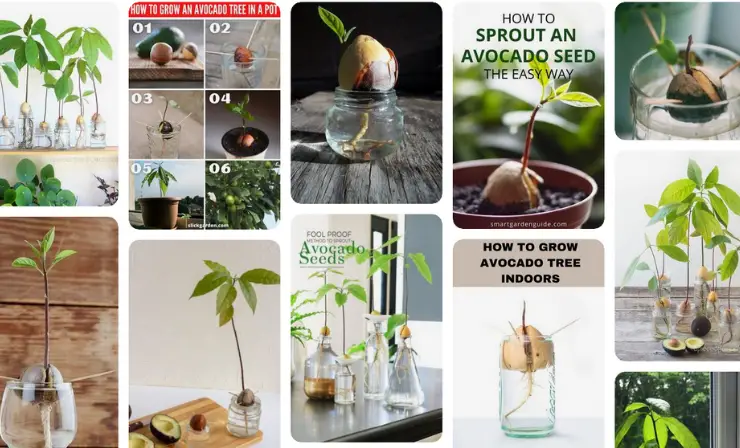
Unveiling the secrets of avocados, the art of growing these lush plants becomes a captivating preschool activity that sparks curiosity and cultivates green thumbs. In this hands-on journey, young learners discover the hidden mysteries of avocado seeds through an engaging DIY experience.
The adventure begins with an avocado seed, an unassuming gem that harbors a fascinating fault line. As preschoolers delve into this activity, they unlock the secrets of this fault line and learn about the unique characteristics of avocado seeds. This knowledge serves as a gateway to understanding the complexities of nature.
Guided by curiosity, children explore the journey from seed to plant. They plant their avocado seeds, nurturing them with care and witnessing the magic of growth as roots take hold and a sprout emerges. This hands-on experience not only fosters a connection to the natural world but also imparts valuable lessons about patience, responsibility, and the vital role of water and sunlight.
Beyond the classroom, the avocado-growing activity is a gateway to discussions about plant life cycles, healthy eating, and sustainable practices. Through their avocados, preschoolers engage in real-world connections, sparking conversations about the origins of the food they eat and the significance of nurturing living things.
By growing avocados, young learners become explorers of the natural world. This activity nurtures a sense of wonder and respect for the environment while fostering a sense of accomplishment as they witness their avocado seeds transform into thriving plants. This journey of growth sows the seeds of curiosity, fostering a lifelong love for learning and nature.
Below is a video demonstrating the process of growing an avocado:
11. Painting with Chlorophyll
Difficulty Level: Middle
Cost: Low
What Does It Teach: Combines art and science by teaching children about the role of chlorophyll in photosynthesis. It introduces them to basic plant processes.
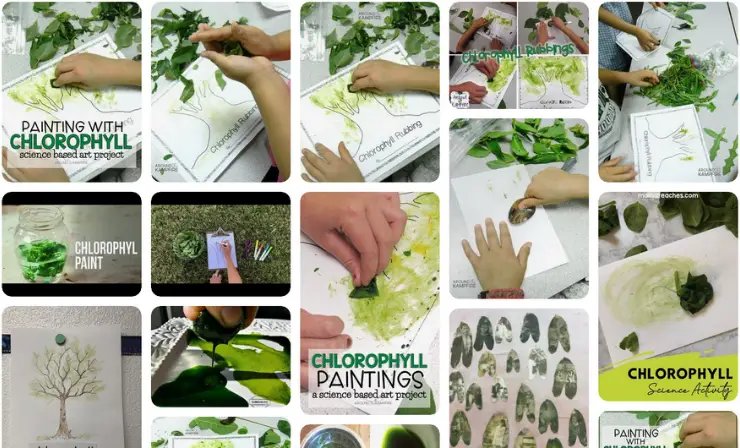
Blending artistry and science, the activity of painting with chlorophyll unveils a captivating world where creativity and plant biology converge. Through this hands-on endeavor, preschoolers embark on a journey that not only ignites their imagination but also imparts a fundamental lesson in the wonders of nature.
Guided by the allure of chlorophyll, the green pigment responsible for a plant’s energy production, young artists delve into a unique form of expression. With plant leaves as their canvases, they use chlorophyll-rich materials to create vibrant imprints, exploring the intricate patterns that emerge from their creative play.
Beyond the artistic process, this activity serves as a gateway to understanding the role of chlorophyll in photosynthesis. As they engage in the tactile experience of transferring chlorophyll onto paper, children grasp the concept of plants converting sunlight into energy to make their own food. This hands-on exploration deepens their connection to the natural world and imparts foundational knowledge about ecosystems.
Painting with chlorophyll not only fosters an appreciation for plant science but also nurtures fine motor skills and creativity. The interplay between art and biology sparks discussions about the importance of plants in our lives, the delicate balance of nature, and the vital role each organism plays in the ecosystem.
Through this activity, preschoolers transform into young scientists and artists, forging a bridge between disciplines and sparking a lifelong love for learning. As their chlorophyll-infused creations take form, so does their understanding of the intricate dance of life on Earth, seeding a sense of wonder that continues to flourish.
Here’s a video about painting with chlorophyll:
12. Performing a Plant Dissection Experiment
Difficulty Level: Middle to High
Cost: Low
What Does It Teach: Provides a hands-on exploration of plant anatomy, teaching children about the different parts of plants and their functions.
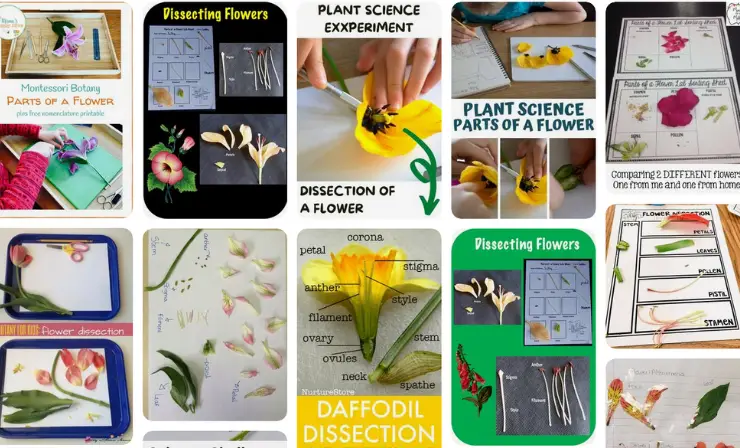
Engaging young minds in a journey of scientific exploration, the plant dissection experiment emerges as a captivating preschool activity that unravels the mysteries of nature’s intricacies. Armed with magnifying glasses and tweezers, children embark on a hands-on adventure to uncover the diverse components of flowers or food plants.
This immersive experience transforms the classroom into a laboratory of discovery. Through careful dissection, preschoolers unveil the hidden secrets of petals, stems, leaves, and more. The magnifying glasses lend a new perspective, magnifying the intricate details and allowing young scientists to observe the textures, colors, and structures that comprise each plant part.
A remarkable aspect of this experiment is its ability to foster teamwork and shared learning. Rather than providing individual plants for every student, the approach of using one plant and assigning different parts to each child encourages collaboration. As they piece together the puzzle of the plant’s anatomy, children not only learn about specific parts but also witness the interconnectedness of each element.
Beyond the scientific exploration, this activity nurtures fine motor skills, patience, and attention to detail. The plant dissection experiment sparks discussions about the role of each part, the importance of plants in our lives, and the intricate balance of nature.
In the realm of plant dissection, preschoolers transition from observers to investigators, fostering a sense of wonder and curiosity that lays the foundation for lifelong learning. As they engage in this hands-on exploration, children cultivate a profound connection to the natural world, sowing the seeds of scientific inquiry and appreciation for the beauty and complexity of plants.
You can also use this video to teach kids about parts of a plant:
13. Conducting a Pipe Cleaner Pollinators Experiment
Difficulty Level: Middle
Cost: High
What Does It Teach: Educates children about the vital role of pollinators in plant reproduction. It teaches about mutualistic relationships in ecosystems.
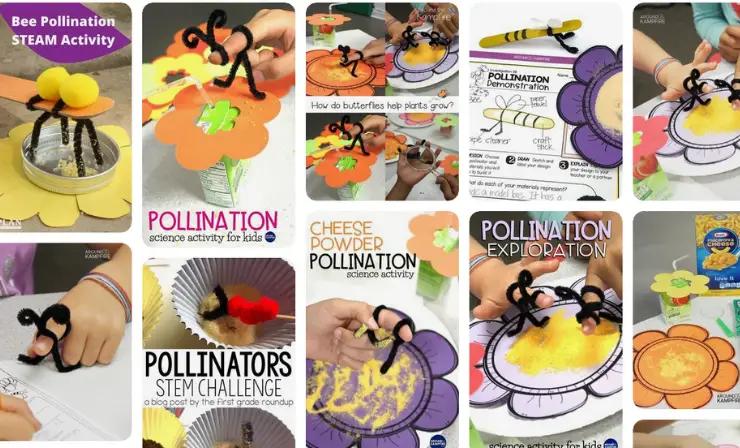
Embarking on a buzzing exploration of the intricate world of pollination, the pipe cleaner pollinators experiment becomes an enchanting preschool activity that unveils the vital role insects play in the plant kingdom. Through this hands-on endeavor, young learners immerse themselves in a captivating journey of discovery.
Guided by the magic of pipe cleaners, preschoolers don the role of pollinators as they simulate the essential process of transferring pollen from one flower to another. This tactile exploration unveils the delicate dance of pollination, illuminating how seed-bearing plants rely on the help of bees, butterflies, and other insects to ensure their survival.
Through this experiential learning, children develop a deep appreciation for the interconnectedness of nature. As they mimic the actions of pollinators, they grasp the significance of their role in plant reproduction and the food chain. This immersive activity also nurtures fine motor skills and coordination, as little hands deftly manipulate the pipe cleaners.
Beyond the classroom, the pipe cleaner pollinators experiment sparks conversations about environmental conservation and the importance of preserving habitats for pollinating insects. Discussions extend to the broader impact of pollinators on global food production, fostering a sense of stewardship for the planet.
Through this activity, preschoolers transform into budding ecologists, unraveling the mysteries of nature’s partnerships. As they engage in this hands-on exploration, they cultivate an enduring connection to the world around them, sowing seeds of curiosity and empathy that will continue to flourish as they grow.
Additionally, you can watch a video about this experiment:
14. Sculpting Plants in Clay
Difficulty Level: Middle
Cost: High
What Does It Teach: Encourages creativity while teaching children about different plant forms and textures. It promotes artistic expression related to plant life.
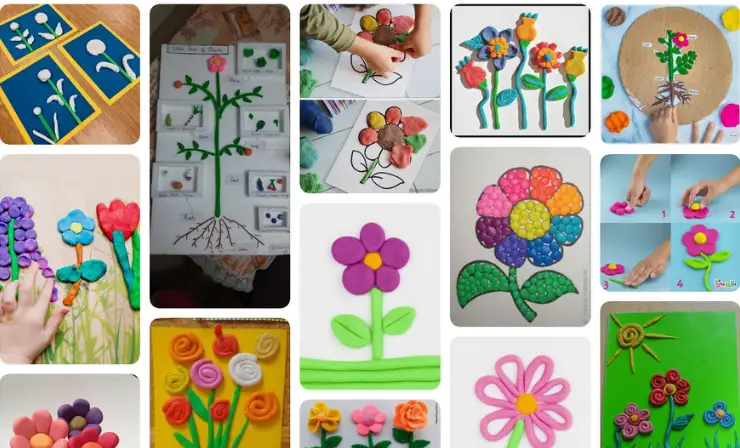
Unleashing imagination through tactile exploration, the activity of sculpting plants in clay opens a gateway to creativity and botanical discovery for preschoolers. In this hands-on adventure, children transform simple clay into intricate representations of nature’s wonders.
Drawing inspiration from the dynamic world of Claymation, young sculptors embark on a journey of creativity that transcends the limitations of traditional growth. While physical growth might be out of reach, their artistic prowess flourishes as they shape and mold Play-Doh into intricate renditions of plants. As their fingers shape the clay, their minds explore the diverse forms and textures that plants exhibit.
Guided by their imagination, preschoolers breathe life into their clay creations. This activity cultivates fine motor skills and spatial awareness while nurturing their innate curiosity about the natural world. Each stroke and indentation becomes an artistic expression of the unique beauty that plants offer.
Beyond artistry, sculpting plants in clay nurtures discussions about the diverse forms and functions of plant life. It sparks conversations about the role of plants in our environment, their importance for oxygen production, and the symbiotic relationships they foster. This playful exploration transcends physical boundaries, connecting children to the essence of growth and nurturing.
Through the process of sculpting, preschoolers become artists and botanists, united by their creativity and curiosity. As they craft their clay masterpieces, they sow seeds of inspiration and appreciation for the intricate beauty of plants, fostering a lifelong connection to both art and the natural world.
Here’s a video about making flowers using polymer clay:
Useful Resources
- National Gardening Association’s Kid’s Gardening Resources
- NASA’s Plant Growth Experiments in Space
- Kids Gardening Activities from the Royal Horticultural Society
- Smithsonian’s National Museum of Natural History’s “How Does Your Garden Grow?”
Conclusion
Incorporating these engaging plant activities into preschool education fosters a deep connection between young minds and the natural world. From exploring growth processes to uncovering the secrets of pollination, each activity nurtures curiosity, creativity, and a sense of stewardship. These seeds of knowledge sown today will flourish into a lifelong appreciation for nature.
- Overview of 22 Low-Code Agencies for MVP, Web, or Mobile App Development - October 23, 2024
- Tips to Inspire Your Young Child to Pursue a Career in Nursing - July 24, 2024
- How Parents Can Advocate for Their Children’s Journey into Forensic Nursing - July 24, 2024
